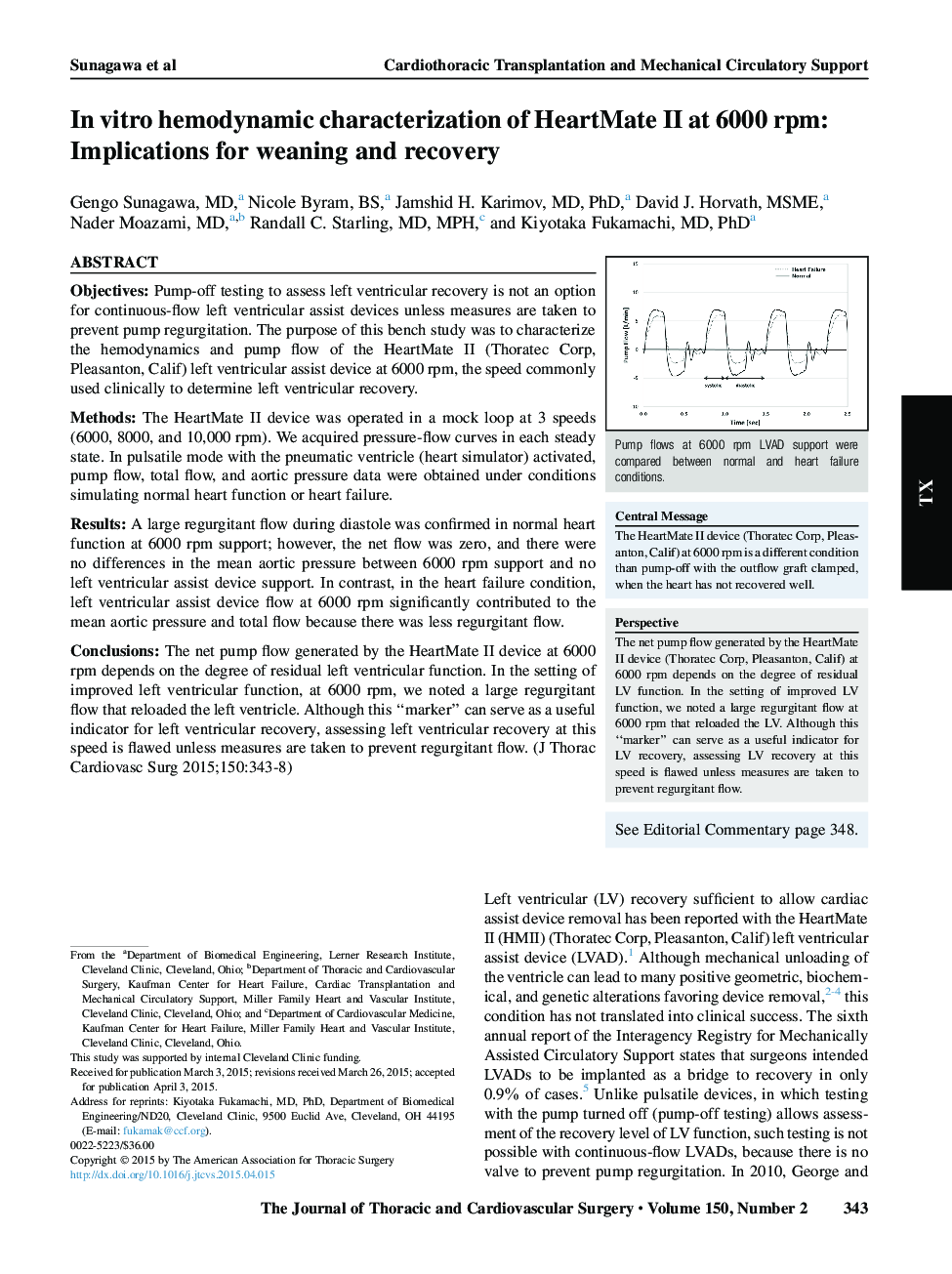| Article ID | Journal | Published Year | Pages | File Type |
|---|---|---|---|---|
| 2979339 | The Journal of Thoracic and Cardiovascular Surgery | 2015 | 6 Pages |
ObjectivesPump-off testing to assess left ventricular recovery is not an option for continuous-flow left ventricular assist devices unless measures are taken to prevent pump regurgitation. The purpose of this bench study was to characterize the hemodynamics and pump flow of the HeartMate II (Thoratec Corp, Pleasanton, Calif) left ventricular assist device at 6000 rpm, the speed commonly used clinically to determine left ventricular recovery.MethodsThe HeartMate II device was operated in a mock loop at 3 speeds (6000, 8000, and 10,000 rpm). We acquired pressure-flow curves in each steady state. In pulsatile mode with the pneumatic ventricle (heart simulator) activated, pump flow, total flow, and aortic pressure data were obtained under conditions simulating normal heart function or heart failure.ResultsA large regurgitant flow during diastole was confirmed in normal heart function at 6000 rpm support; however, the net flow was zero, and there were no differences in the mean aortic pressure between 6000 rpm support and no left ventricular assist device support. In contrast, in the heart failure condition, left ventricular assist device flow at 6000 rpm significantly contributed to the mean aortic pressure and total flow because there was less regurgitant flow.ConclusionsThe net pump flow generated by the HeartMate II device at 6000 rpm depends on the degree of residual left ventricular function. In the setting of improved left ventricular function, at 6000 rpm, we noted a large regurgitant flow that reloaded the left ventricle. Although this “marker” can serve as a useful indicator for left ventricular recovery, assessing left ventricular recovery at this speed is flawed unless measures are taken to prevent regurgitant flow.
